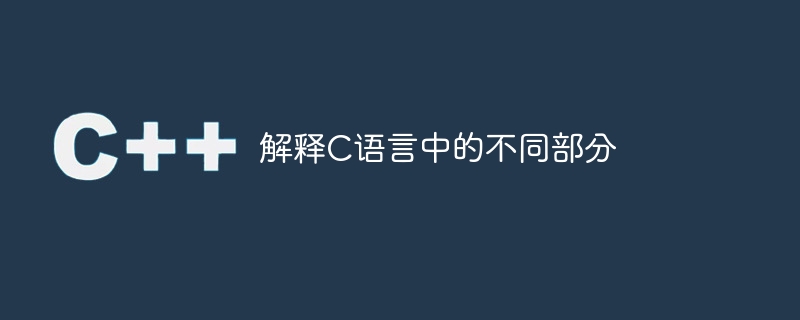Home >Backend Development >C++ >Explain the different parts of C language
Explain the different parts of C language
- PHPzforward
- 2023-08-26 19:09:061029browse

C programs are defined by a set of protocols that programmers must follow when writing code.
Parts
The complete program is divided into different parts as follows:
Documentation Section - here , we can give commands about the program, such as author name, creation or modification date. The information written between /* */ or // is called a comment line. These lines are not considered by the compiler during execution.
Link section - In this section, the header files required to execute the program are included.
Definition Section - Here, variables are defined and initialized.
Global declaration section - In this section, global variables that can be used throughout the program are defined.
Function prototype declaration section - This section provides information such as the return type of the function, parameters, and names used internally by the function.
Main function - The C program will be compiled starting from this part. Usually, it has two main parts called declaration part and executable part.
User-Defined Section - Users can define their own functions and perform specific tasks according to the user's needs.
The general form of 'C' program
The general form of C program is as follows:
/* documentation section */
preprocessor directives
global declaration
main ( ){
local declaration
executable statements
}
returntype function name (argument list){
local declaration
executable statements
}Example
The following is a C program that performs addition using a function with parameters but no return value−
Online demonstration
#include<stdio.h>
void main(){
//Function declaration - (function has void because we are not returning any values for function)//
void sum(int,int);
//Declaring actual parameters//
int a,b;
//Reading User I/p//
printf("Enter a,b :");
scanf("%d,%d",&a,&b);
//Function calling//
sum(a,b);
}
void sum(int a, int b){//Declaring formal parameters
//Declaring variables//
int add;
//Addition operation//
add=a+b;
//Printing O/p//
printf("Addition of a and b is %d",add);
}Output
You will see the following output−
Enter a,b :5,6 Addition of a and b is 11
The above is the detailed content of Explain the different parts of C language. For more information, please follow other related articles on the PHP Chinese website!

